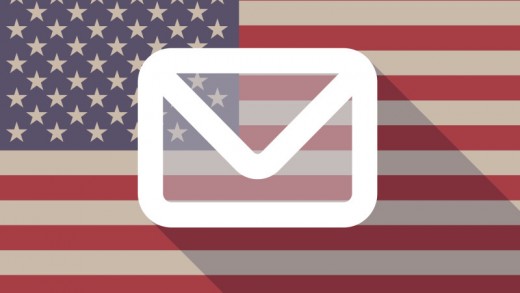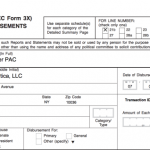e mail Frequency issues For direction To The White home
within the 2d piece of this four-part collection, columnist Tom Sather takes a take a look at the e-mail campaigns of the presidential contenders and explains why overmailing and undermailing both elevate dangers.

In my final column, I mentioned the importance of list measurement and deliverability and how that impacts attain and engagement. the opposite essential element on this equation is frequency and cadence, and is one among many components that the Obama campaign examined during his re-election campaign to drive $500 million in donations.
performed improperly, the frequency of electronic mail campaigns can have bad consequences.
Undermailing Has risks
When the general public recall to mind e mail frequency, they think of the effects of overmailing. however, undermailing can also be just as devastating as overmailing for a number of causes.
First, mailing too little is a ignored possibility. For retailers, it way fewer chances to spur buyers to purchase, and in the case of presidential elections, it’s fewer probabilities to obtain donations and to tell voters of key messages and events.
The inbox can be an especially crowded place where customers go together with usually two targets: learn what’s essential to me and delete, delete, delete. the dearth of an inbox presence might imply lack of brand acceptance in the end.
Undermailing may have terrible penalties on deliverability. If model attractiveness is damaged via undermailing, subscribers may just find themselves scratching their heads wondering “Who is this?” after which reporting the email as spam on the grounds that they don’t remember giving the sender permission to email them.
A decrease extent of e mail also implies that subscriber complaints may have a more robust impact on inbox placement.
Sending too sometimes moreover signifies that recognition-based totally unsolicited mail filters have a tougher time predicting if your mail is needed or now not, and provides fewer chances for entrepreneurs to scrub their lists from bounces and unsolicited mail traps.
results Of Overmailing
Overmailing is an idea higher understood via most entrepreneurs. ship too much electronic mail and subscribers grow to be frustrated and unsubscribe or report the email as unsolicited mail. They may additionally simply take the method of ignoring your emails and delete them as they arrive or set up a rule of their inbox to delete future emails.
making an allowance for Engagement And Frequency
When taking a look at optimizing frequency, it’s vital to believe the engagement makeup of your record. by doing this, which you can make a better judgment of how smartly your checklist will deal with increases in frequency.
In Return course’s (my employer) latest learn about, “Frequency matters,” we checked out three kinds of money owed: main, secondary and useless.
major bills are electronic mail accounts that obtain a mixture of private and promotional electronic mail. These individuals are rather energetic within the inbox as well.
Secondary bills are bills which are used as a promotional seize-all. you might have this type of addresses that you simply all the time give to brands after they’re asking to your e mail tackle.
dead bills are addresses that infrequently engage with any messages in their inbox. They’re more possible a mixture of secondary bills which might be infrequently checked or they’re addresses that have been abandoned.

in the find out about, we discovered that the primary bills accounted for quite lower than 25% of top shops’ electronic mail lists, however accounted for a whopping 83% of all reads and 50% of all subscriber complaints. not simplest are these your most loyal subscribers, but they’re also probably the most sensitive. increasing frequency to this section should be carried out with care.
Secondary bills made up sixty seven% of whole lists, 49% of all complaints and most effective 16% of reads/opens. dead bills have been not up to 10% of lists, and best made up 1% of reads/opens and complaints.
while most highest practices recommend focusing on growing frequency on the primary — as a result of they’re your largest fans and least likely to complain — that’s not the case at all. And the individuals who counsel chopping the secondary and useless debts as a result of they perceive them to be more “grumpy” are additionally incorrect.
How Frequency matters in the Presidential Race
in the case of the presidential contenders, my column ultimate month checked out record dimension, deliverability and attain, and read rates; the consequences confirmed that Ron Paul would likely “win” or at least have a competitive benefit over the others.
If we take frequency into the image, things alternate dramatically. while extra have thrown of their hat for the Republican nomination, I simplest seemed on the candidates from final month’s diagnosis.
| main | Secondary | dead | major Reads | Secondary Reads | useless Reads | main Frequency | Secondary Frequency | useless Frequency | |
| Hillary Clinton | 45% | 54% | 1% | 86% | 14% | 1% | 3 | 2 | 1 |
| Rand Paul | sixty nine% | 31% | 1% | 88% | 12% | 1% | 1 | 1 | 1 |
| Carly Fiorina | 36% | sixty three% | 1% | 85% | 15% | <1% | <1 | <1 | <1 |
| Jeb Bush | 39% | 59% | 2% | 87% | 13% | <1% | 1 | 1 | 1 |
| Mike Huckabee | forty one% | 58% | 1% | 86% | 14% | <1% | 1 | 2 | 2 |
| Bernie Sanders | 50% | 50% | 1% | 80% | 20% | <1% | 2 | 3 | 2 |
| Marco Rubio | 48% | 50% | 2% | 88% | 12% | <1% | 1 | 1 | 1 |
| Ben Carson | 41% | fifty eight% | 1% | eighty two% | 18% | <1% | 1 | 1 | 1 |
supply: Return route, Frequency Finder
Rand Paul not only had the biggest subscriber checklist, he also had the most subscribers with major money owed signaling robust record acquisition practices, and an energetic and subscriber base. Carly Fiorina had the bottom selection of active subscribers with simplest 36% of her checklist being a first-rate e-mail address.
All candidates had low numbers of dead electronic mail address, however Jeb Bush and Marco Rubio had twice as many because the others (2% vs. 1%).
Presidential Hopefuls And Frequency reach

When having a look at frequency relative to the the candidate with the biggest frequency reach, Paul loses a lot of his aggressive benefit to Hillary Clinton, because of frequency. Clinton despatched three per week to major addresses, two per week for secondary, and just one electronic mail per week to lifeless addresses. Paul sent one e-mail per week in spite of engagement.
while you have a look at the size of each and every electronic mail checklist, engagement and frequency breakout, Clinton is on virtually equal footing with Paul. Fiorina’s frequency is not up to weekly, so her numbers weren’t incorporated in this chart, but Rubio’s reach used to be 67% less than that of Paul and Clinton.
not one of the candidates had been sending so continuously that it caused larger-than-reasonable criticism levels. Most have been slightly conservative with their sending frequency, aside from Clinton intelligently sending more to her energetic base and less to the much less engaged.
whereas we are able to’t inform but how a lot was raised via donations from these candidates, Obama’s campaign realized that sending extra indeed resulted in more donations, and sure more brand consciousness. in the next column, we’ll take a look at how the candidates are optimizing topic traces for greater opens and donations.
Some opinions expressed on this article may be these of a guest writer and no longer necessarily marketing Land. workforce authors are listed right here.
(Some images used below license from Shutterstock.com.)
marketing Land – internet advertising news, strategies & guidelines
(120)















